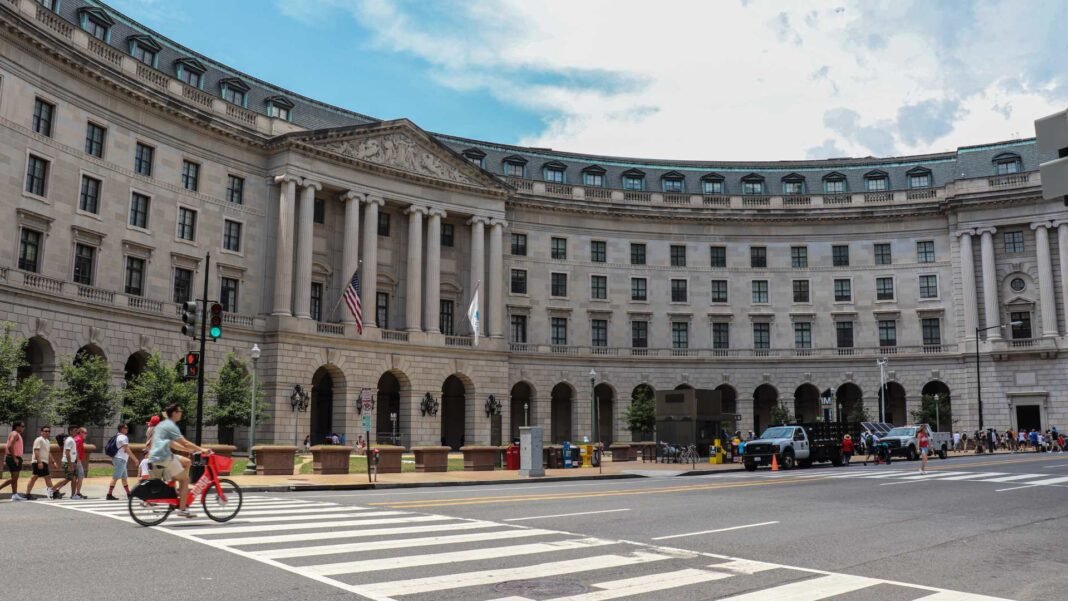The Biden administration is on the verge of finalizing a significant treaty with Saudi Arabia, aimed at bolstering diplomatic relations and enhancing regional security. This treaty is poised to have far-reaching implications for the United States, Saudi Arabia, and the broader Middle East region. According to a recent report by the Wall Street Journal, the U.S.-Saudi security treaty would commit the United States to defending the Gulf nation in the face of potential threats.
Key Points of the U.S.- Saudi Security Treaty:
- Strategic Alliance Agreement:
The proposed treaty between the United States and Saudi Arabia, known as the Strategic Alliance Agreement, draws inspiration from Washington’s mutual security pact with Japan. It seeks to establish a robust partnership between the two nations, emphasizing mutual defense obligations. The approval of this treaty hinges on a two-thirds majority vote in the U.S. Senate, highlighting the significant political threshold it represents.
- Defending Saudi Arabia:
In the event of an attack on Saudi Arabia, the draft treaty commits the United States to assist its Gulf ally. In exchange, Washington gains access to Saudi territory and airspace, ensuring the protection of U.S. interests and those of its regional partners. This access serves as a deterrent to potential aggressors, underscoring the U.S.’s steadfast commitment to Saudi security.
- Broader Package:
Beyond defense, the treaty forms part of a broader package aimed at addressing various regional issues. This comprehensive approach includes commitments to mutual security and initiatives such as a U.S.-Saudi civil nuclear pact, steps toward Palestinian statehood, and efforts to resolve the ongoing conflict in Gaza. By intertwining these diverse elements, the treaty demonstrates a multifaceted strategy for promoting stability and peace in the Middle East.
Moreover, the proposed treaty reflects the dynamic geopolitical landscape of the Middle East, where traditional alliances are shifting and new partnerships are emerging. This evolution underscores the strategic significance of the region and highlights the complex interplay of interests among global powers.
- Binding Riyadh to Washington:
Moreover, the treaty aims to bind Riyadh more closely to Washington by aligning Saudi interests with those of the United States. By prohibiting China from establishing military bases in Saudi Arabia or pursuing security cooperation with Riyadh, the agreement reinforces the strategic partnership between the two nations. This alignment enhances regional stability and strengthens ties between Riyadh and Washington.
Challenges and Implications:
While the U.S.-Saudi Security Treaty holds immense promise, challenges remain. Achieving the necessary Senate approval will require skillful diplomacy, especially if tied to Israeli-Saudi normalization. Additionally, the White House, the U.S. State Department, and the Saudi embassy have yet to respond publicly.
Challenges and Considerations for the Treaty’s Implementation
While the treaty holds the promise of enhancing security and stability in the Middle East, its ultimate success will depend on various factors, including diplomatic negotiations, domestic politics, and regional developments. Negotiating the final terms of the treaty may prove challenging, given the divergent interests and priorities of the parties involved. Overcoming these obstacles will require skillful diplomacy and compromise.
Moreover, the U.S.-Saudi Security Treaty may face resistance from other regional actors who perceive it as a threat to their interests or as further entrenching American dominance in the Middle East. Managing these tensions will be essential to its implementation.
Implications for China in the Proposed U.S.-Saudi Security Treaty
The proposed U.S.-Saudi Security Treaty carries significant implications for China’s interests in the region. Firstly, China’s involvement suggests that Saudi Arabia is diversifying its alliances while maintaining its strategic partnership with the United States. Riyadh, seeking an alternative to U.S. support, finds China a viable option. Additionally, by engaging with China, Saudi Arabia gains leverage in its relations with Iran, as China’s economic ties and diplomatic influence provide Riyadh with additional negotiation power. Furthermore, the treaty indirectly deepens Saudi ties with Beijing, as China’s technology and resources are crucial for Saudi Arabia’s development. However, the treaty may also restrict China’s arms purchases and investment in Saudi Arabia, in exchange for which Saudi Arabia gains access to advanced U.S. weaponry.
The U.S.-Saudi Security Treaty represents a critical step toward fostering diplomatic ties and safeguarding regional interests. As negotiations continue, the world watches closely, recognizing the treaty’s potential impact on Middle Eastern stability and global security






